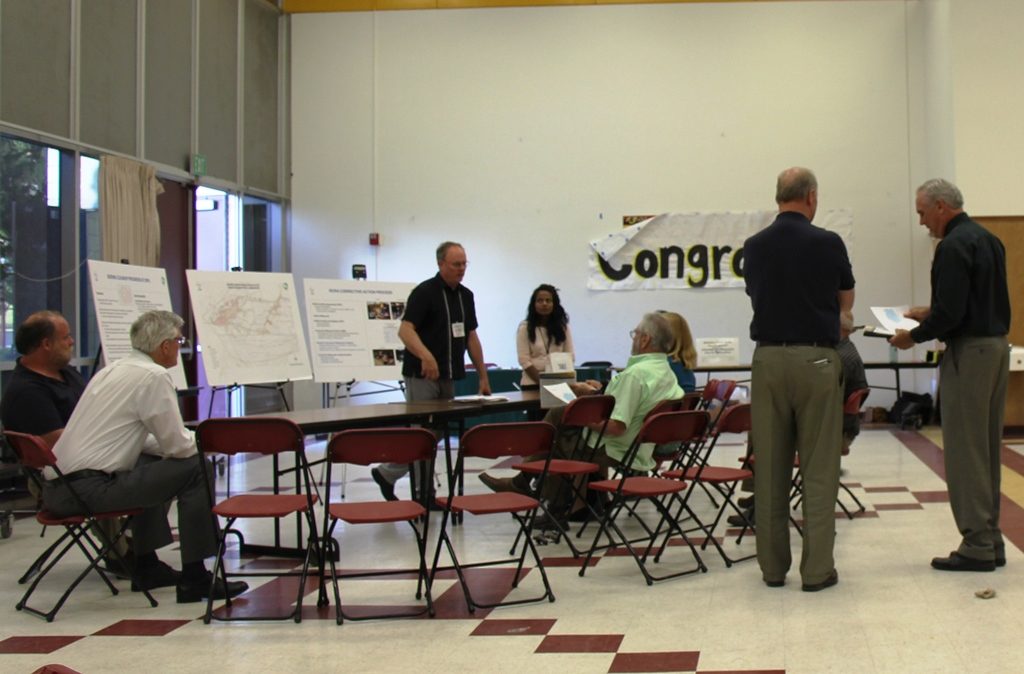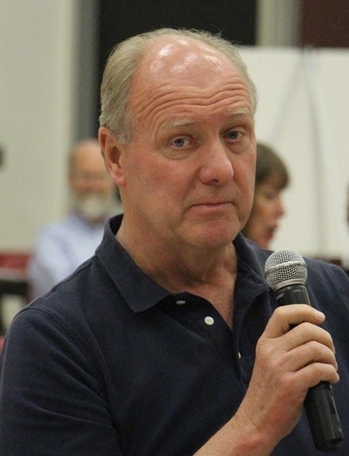
30. Page 19/59: “The BTVs Tetra Tech chose to use for comparison were published as part
of the DTSC Chemical Background Study “Combined-Data Background Threshold Values and Methodology Narrative Chemical Soil Background Study” (DTSC, 2012) and the EPA radiological background study (HGL. 2011 ).”
[ER NOTE: FALSE – As just shown, Tetra Tech, inflated the BTVs for Cs-137 and Sr-90 yet DTSC chooses to make this statement two paragraphs later in its report.]
31. Page 19/59: “All of the Sr-90 samples were less than the laboratory reported MDCs except for a detection of 0.182 pCi/g in a sediment non-background sample. This value exceeded the SSFL BTV (0.075 pCi/g). The laboratory analytical case narrative indicates that while the total radio-strontium is reported as Sr-90, the presence of other isotopes of strontium may cause positive bias in the measured strontium concentration. This could potentially lead to a reported value that is higher than the actual sample concentration.”
[ER NOTE: BLAME THE LAB – Instead of investigating the site of this high Sr-90 detection, 248 percent above its real BTV, the detection is blamed on ‘lab error.’ Only the high hits. DTSC’s bad science appraisal also left out that Tetra Tech’s 523-page 2016 report shows that AJU’s testers “collected eight drainage sediment samples (drainages were dry at the time of sample collection) and ten soil samples as part of the BBC radiological and soil investigation in accordance with the methods outlined in Section 3.2,” according to the report. That’s 18 soil samples for 2,878 acres or one test for every 160 acres. Even with this small set of samples, Tetra Tech pulled soil with 248% the normal amount of strontium-90. According to a Tetra Tech map on PDF page 110 of the report, the high strontium-90 was found in the “Main BBC Area” in the heart of the Jewish camp.]
32. Pages 19-20/59: “Tetra Tech’s overall conclusion was that the environmental and radiological conditions at Brandeis Bardin pose no unacceptable human health risk to campers, camp counselors, visitors, or residents (Tetra Tech. 2016). These overall findings are reasonable and consistent with the Area IV chemical and radionuclide findings.”
[ER NOTE: FALSE – DTSC equates Tetra Tech’s 18 soil samples with the numerous Area IV studies by DOE and US EPA which spent $41.5 million assessing the place. What US EPA found was shocking as EnviroReporter.com reported in Radiation Readings Soar at Rocketdyne. Cesium-137 clocked in at 9,328 times its BTV with strontium-90 tested at 284 times background. By writing this, DTSC deliberately erases Area IV’s “chemical and radionuclide findings” in order to deceive the reader on the contamination of Area IV, falsely making the DOE site seem as benign as it has made out Brandeis-Bardin to be. This is totally false.]
33. Page 25/59: “Overall, considering the extensive number of samples collected at BBI in the 1990s, sampling conducted by Tetra Tech in 2016, and by US EPA during the Area IV Study for this pathway, the significant amount of data show no pattern indicative of a complete contaminant pathway for radionuclides.”
[ER NOTE: FALSE CONCLUSION – DTSC outdoes itself when it anchors its predetermined outcome on decades-old tests, a test by the landowner sampling 1 out 160 acres on average, and a study that didn’t look at Brandeis-Bardin at all. DTSC not only leaves out all the recent DOE and NASA data, it conveniently forgets its own chemical contamination pathway into Brandeis-Bardin map it showed at an April 28, 2015 public meeting. Radionuclides also follow these pathways as they are chemicals themselves and obey the laws of gravity and water just like the ones shown on the map do. So “the significant amount of data” DTSC refers to doesn’t include its own. This is DTSC’s seventh pillar of prevarication – Ignore your own data of Brandeis-Bardin contamination even if you’ve already made it public.]

34. Pages 26-30/59: “Risk Based Screening Levels: On-site SSFL results and Brandeis Bardin results were screened with respect to Risk-Based Screening Levels. This evaluation is not based on a risk assessment; rather, it relies on a conservative point-by-point screening of individual sample results (as opposed to area averaging of results) to their respective risk-based screening levels.”
[ER NOTE: JETTISON CLEANUP TO BTV – DTSC serves up another super-sized word salad that, once again, grossly inflates the amount of acceptable toxins for Brandeis-Bardin over the background levels of radiation and chemicals that Area IV and NASA’s areas will be cleaned to. No amount of risk analysis can explain away soil and water contaminated above background levels of goo.
The suggested levels deemed okay are astounding: The Brandeis-Bardin recreator “risk based screening level” (RBSL) for strontium-90 is 18.4 pCi/g for dirt when its BTV is 0.0735 pCi/g. That means DTSC is signing off on Brandeis-Bardin dirt having 250 times more strontium-90 than it will allow at Area IV itself according to the AOC. Plutonium-238’s Brandeis-Bardin recreator RBSL is 4,306 times its BTV and plutonium 239/240’s camp screening level allowed is 1,194 times its background.
This hyper-inflation of these radionuclides’ BTVs is why the report can subsequently say on page 30 “The highest Sr-90 result is nearly 19 times less than the SSFL residential risk based screening level and over 90 times less than the SSFL recreator risk based screening level. The Pu-238 and Pu-239/240 off-site results also were significantly less than their respective SSFL RBSLres and SSFL RBSLrec values.”]
35. Page 31/59: “Based on the results of these SSFL investigations, some chemical exceedances of the Area IV Look-up Table have been identified in surficial sediments. The sediments could migrate along drainages from SSFL into the Northern Buffer Zone, and extend into a limited number of steep drainages and onto Brandeis Bardin property. The chemicals found at the BBI property are at very low levels, which can be expected to occur across many areas of the state and may not be from SSFL sources.”
[ER NOTE: WISHFUL THINKING – As noted in 6B, DOE’s list of chemicals found in Brandeis-Bardin were several multiples of their BTVs. It is not only bad science, but ludicrous, to claim the chemicals “may not be from SSFL sources.” Where else would they be from?]
36. Page 31/59: “Likewise, because they are sporadic and at low-levels, the chemical exceedances found off-site are not at levels considered harmful to human health.”
[ER NOTE: FALSE – The California Highway Patrol’s hazardous materials protocols include considering any toxic substance at over three times background to constitute a HazMat situation. 6B clearly shows toxins at levels exceeding this tripwire. As shown in 4D, fluoride and manganese have repeatedly exceeded their respective MCL and secondary MCL – harmful by definition yet there is no indication that it has ever been recognized as such.]

37. Page 31/59: “The contaminants of greatest concern, identified through extensive soils investigation, are confined to the SSFL site and do not extend off site.”
[ER NOTE: FALSE – See 4D and 33.]












Recent Comments